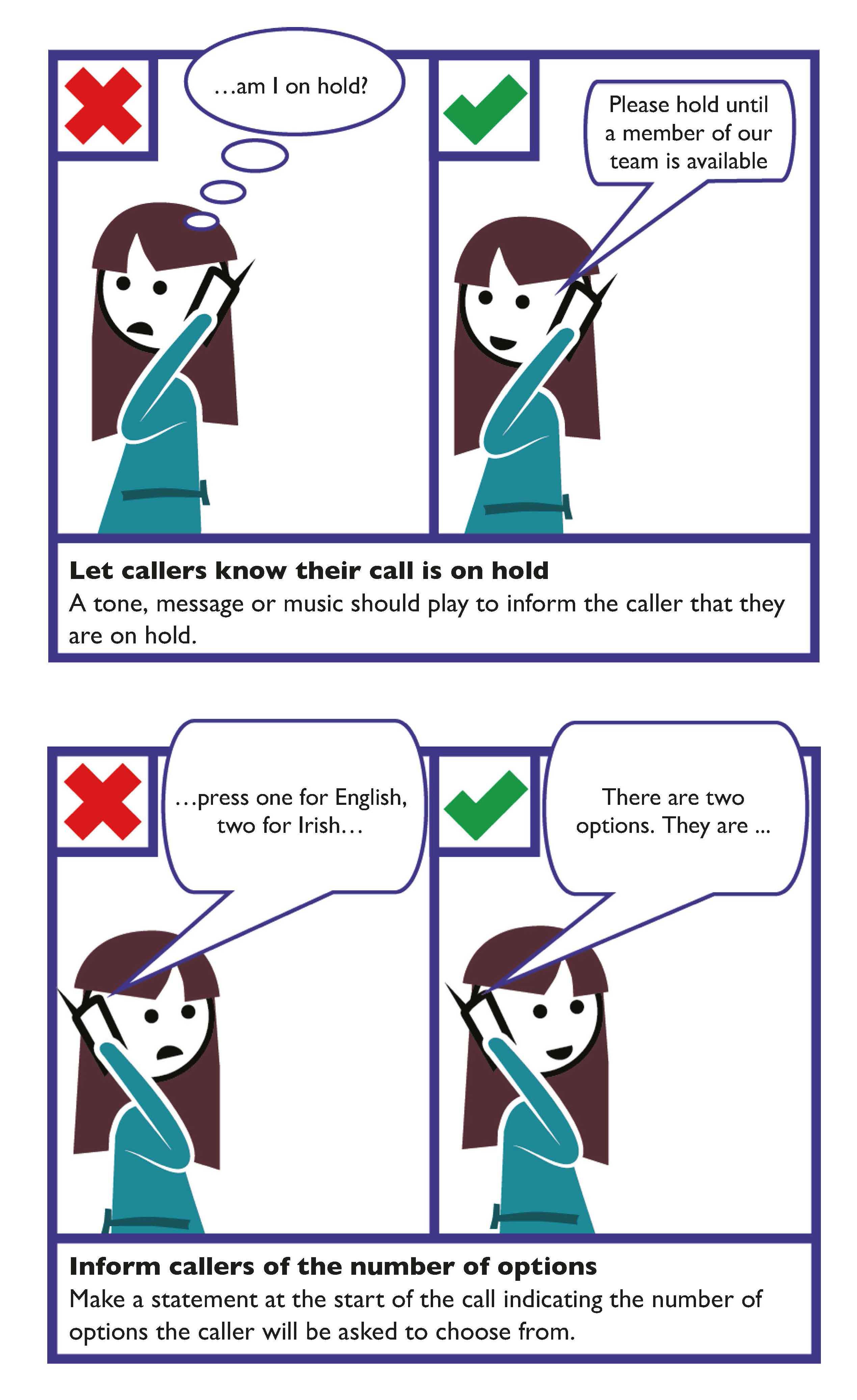If you use an Interactive Voice Response (IVR) System or call routing in your organisation, the following guidance should be applied:
Keep call routing systems simple
The call routing system should be kept as simple as possible. It should have no more than three levels, with no more than four options per level.
If your caller doesn’t make a choice, divert the call to a live agent
Where your caller fails to make a recognised choice, they should be automatically diverted to an employee. This should automatically be done once the options have been presented twice.
Avoid repetition or unnecessary gathering of information
If it is necessary to transfer the caller to a different section or organisation during a call, avoid gathering unnecessary information or repetition.
For example, where the caller has provided you with their name or contact details, you should pass this information onto the employee in the other section.
Only state important information
Information that is important to the caller should be presented at the beginning of the automated response options. This is to ensure that the caller is not provided with too much information, which would make instructions harder to follow.
Provide options in order of priority
Options should be presented in order of importance. This should be based on the types of calls that you most commonly receive.
Only provide frequently used options
The options provided should be those that are most frequently used by your callers. This is to avoid providing an exhaustive list.
Inform your caller upfront of the number of options
Make a statement at the start of the call identifying how many options the caller will be asked to choose from.
Music or a signal should be given to indicate that the caller is on hold
Where your caller is placed on hold by the system, music or an alternative signal should be given. This will let the caller know they are on hold.
Give an indication of the wait time
Where possible give the caller an indication of wait time or queue size.
Provide alternative ways to make contact
Provide an alternative channel for members of the public who are not able to use telephone based systems. For example, SMS messaging based communication.
Tip
Put details of call routing or IVR on your website and where required in print. This will help members of the public see what their options are and help them choose the option that is most suitable for their query.

Telephone Based Call Routing and Message Service Checklist
- Inform the caller upfront of the number of options to choose from and provide the options in order of priority.
- Only provide frequently used options.
- If the caller does not make a choice, divert to an employee.
- Music or a signal should be given informing the caller that they are on hold.
- Avoid repetition or unnecessary gathering of information.
- Provide alternative ways for members of the public to make contact.
- Where possible give an indication of the waiting time.
- Confirm when the transaction has been completed successfully.
